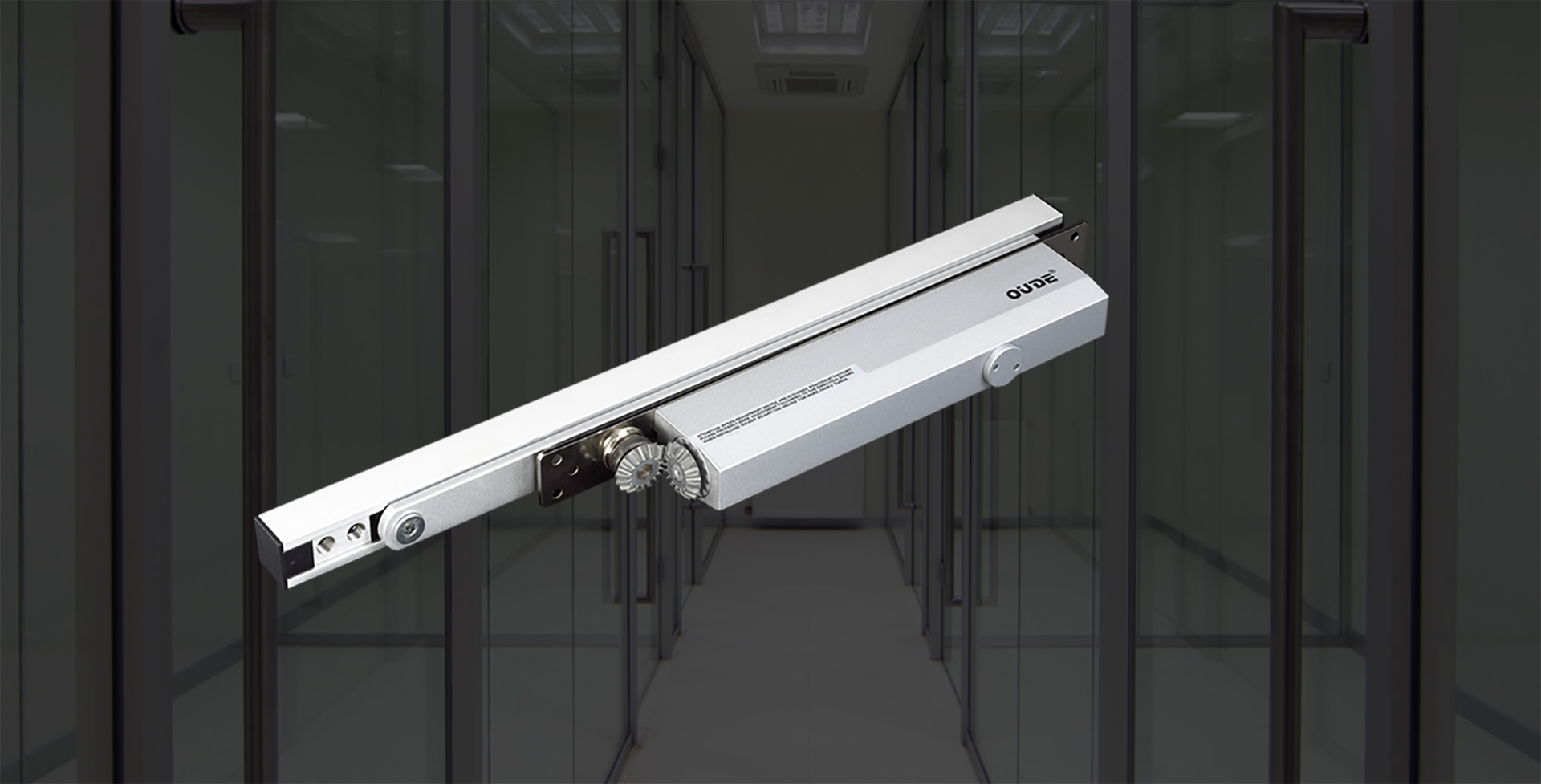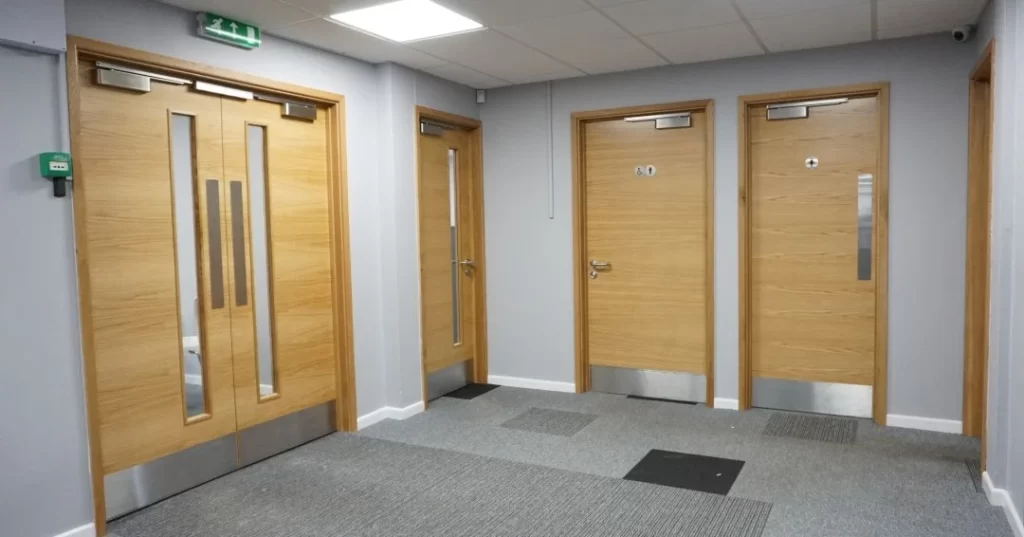
Door closers are available with different spring power capacities, body kinds, colored finishes, degrees of door cycle durability, mounting options, and testing certifications. To pick the best door closer for your purposes, you must take all of these considerations into account.
Choosing incorrectly might result in expensive harm. For example, if you put an undersized door closer to a big industrial door, it may leak oil or hydraulic fluid, which may damage and discolor the door.
This post will provide you with all the information you need to choose the ideal door closer and steer clear of these “door catastrophes.”
| Consideration | Description | Recommendation |
| Door Size | Choose the appropriate spring size based on the door’s dimensions and weight. | For example: Size 1 for 28″-32″ doors; Size 5 for 48″-54″ doors. |
| Mounting Options | Select the mounting type based on the door frame and space: Regular, Top Jamb, or Parallel Arm. | Regular: For internal doors; Top Jamb: For commercial doors; Parallel Arm: For limited space. |
| Function Adjustments | Understand the functions of Closing Speed Valve, Latch Speed Valve, Backcheck Speed Valve, and Delayed Action Valve. | Adjust according to needs, especially in settings like hospitals or schools. |
| Fire Rating | Ensure the door closer complies with NFPA 80 fire safety requirements and is UL10c certified. | Use hardware compatible with fire-rated doors for safety. |
| Usage Frequency | Consider the frequency of door usage to choose the appropriate grade (Grade 1, 2, or 3). | Grade 1 for entry doors; Grade 2 or 3 for storage doors. |
| ADA Compliance | Ensure the door closer meets Americans with Disabilities Act (ADA) requirements, closing within five seconds. | Choose an adjustable spring door closer to meet the requirements. |

A door closer is a mechanical device that operates on hydraulics to regulate the swinging action of a door. Most often seen on business doors, but sometimes found on residential ones as well. Inside springs in commercial door closers compress the door as it opens and extends to shut it. The amount of spring required depends on the weight and size of the door.
Spring sizes for commercial door closers range from 1 (low duty) to 6 (high load). For instance, a size 5 spring would be appropriate for a huge 48″ external door, but a size 1 spring would work just fine for a small 32″ internal door.
Here are the recommended spring sizes for interior doors:
For exterior doors that swing out:
For exterior doors that swing in:
There are three mounting options for commercial door closers: normal, top jamb, and parallel arm. Every approach has benefits of its own. Take into account the area around your door while selecting which technique to utilize. For example, if your door frame has an exit sign just above it, a conventional mount or parallel arm mount may work better than a top jamb mount.
| Mount Type | Suitable For | Features |
| Pull Side or Standard | Internal doors only | Attaches to pull side, saves space, allows 180-degree swing, full closing power |
| Push Side Top Jamb | Commercial storefront doors with thin top rails | Allows 180-degree swing, controls wide reveals, needs space above door frame |
| Push Side Parallel Arm | Spaces with limited room on door frame face | Places closer on push side, forearm under door frame, less powerful, needs additional bracket |
With any commercial door closer, there are two fundamental valve speed modifications available:
Furthermore, there are two further modifications that may significantly improve the functionality of the door closer:
Backcheck Speed Valve: This valve controls the door’s opening speed between 75 and 80 degrees. It functions as a cushion, keeping the door from crashing open in the event of sudden swings brought on by hard treatment or high gusts.
Delayed Action Valve: Also called the hold open adjustment, this valve prevents the door from shutting on its own while it is completely open. It can hold the door open for up to 30 seconds and extends from fully open to around 70 degrees of the closing cycle.
This is particularly helpful in settings like hospitals, schools, and nursing homes where the elderly, young children, or those with impairments need additional time to go through securely.
According to NFPA 80 (the National Fire Protection Agency), fire doors have to shut automatically, either on their own or with electrical aid. In order to ensure fire safety, the door-closing gadget has to be UL10c approved.
When you open your door, look for a fire label on the hinge side to determine whether it is a fire door. The door closer has to be UL10c listed if it is fire-rated. Additionally, while installing a door closer to a fire door, it’s imperative to utilize the appropriate hardware.
As these doors feature reinforcing plates, you should always use the hardware that comes with the door. For fire-rated doors, Liberty door closers are all UL10c listed.
Always keep the frequency of door usage in mind. In contrast to the main entry doors of a building, a storage door will not see as much traffic. The door closer’s grade contributes to its heavy-dutyness. The number of cycles a closer can manage determines the following:
The Americans with Disabilities Act (ADA) states that a door closer should only need five pounds of constant power to open all the way. Additionally, the door must shut in at least five seconds from ninety degrees open to twelve degrees closed.
Closing too soon will prevent it from adhering to ADA requirements. The installer may match the spring size to the door for the ideal closing speed by selecting an adjustable spring door closer.
The primary closing speed valve also allows for adjustments to the closing speed; however, the spring size must match the size of the door. There are door closers without barriers that just need a 5 lb opening force.




